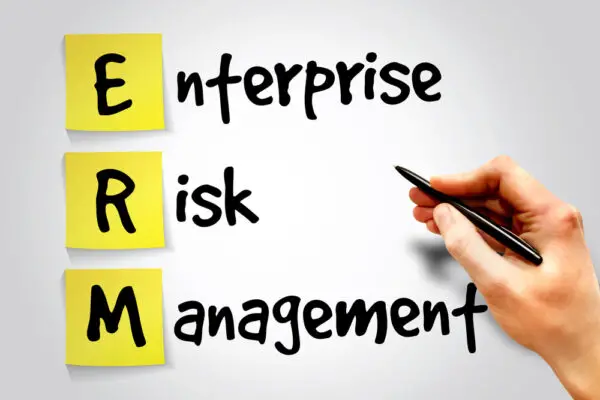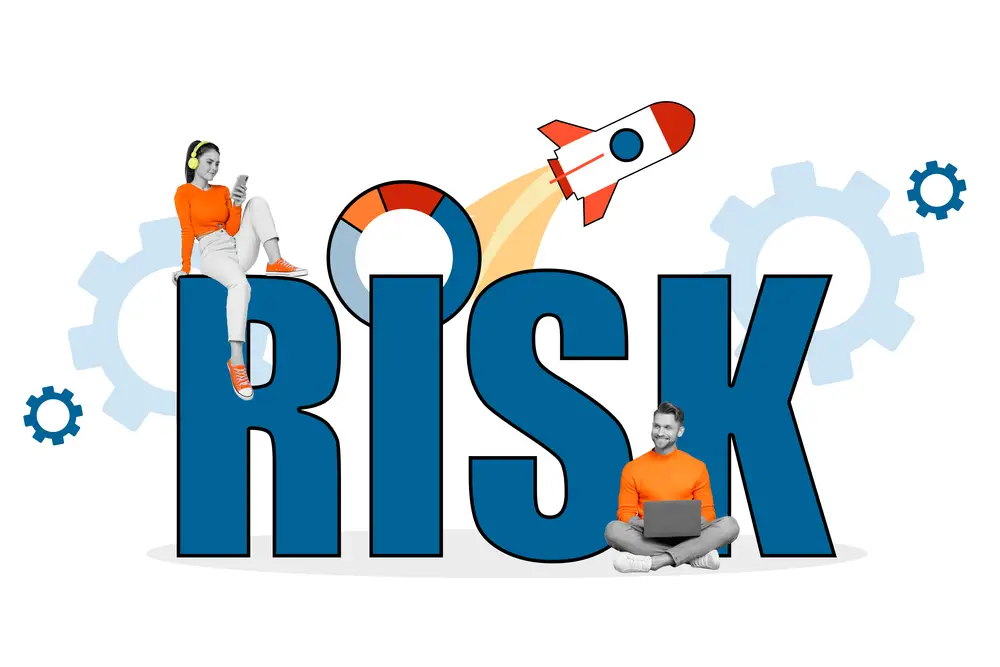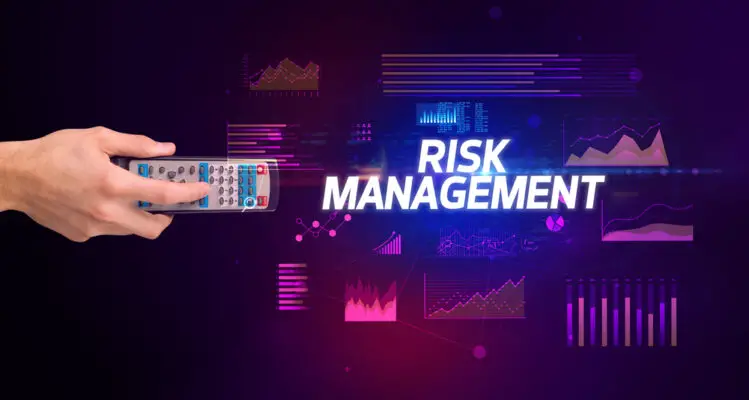CRM is a framework that allows you to identify, assess, and respond to risks organizationally and systematically.
Composite risk management (CRM) is a process for identifying, assessing, and responding to risks. Businesses and organizations often use it as a way to proactively manage risk before it becomes a problem.
CRM is a decision-making process that helps identify, assess, and control risks. It’s a systematic approach to managing risks that take into account all aspects of an organization’s activities.
CRM aims to reduce the overall risk to the organization by identifying potential hazards, assessing the associated risks, and implementing controls to mitigate those risks.
CRM is used by organizations of all sizes in a variety of industries. It’s an important tool for any organization that wants to reduce potential losses and keep its employees, customers, and other stakeholders safe.
CRM is an increasingly popular method of assessing and mitigating potential risks that could have an adverse effect on a company’s operations. With its focus on process improvement, organizational accountability, critical analysis, and collaboration between stakeholders, CRM can be a powerful tool for improving operational performance in any organization.
In this blog post, we’ll closely examine what makes up the Composite Risk Management framework. We’ll explore the different phases of the CRM process and discuss how it works in action – ultimately providing insights into why this protocol should be something all organizations consider implementing in their own operations.
How Does CRM Work?
CRM consists of four steps: identify hazards, assess risks, implement controls, and monitor/evaluate. Let’s take a closer look at each step:
1. Identify Hazards
The first step in composite risk management is to identify potential hazards. A hazard is anything that has the potential to cause harm or damage to people, property, or the environment. Hazards can be natural (e.g., earthquakes, floods), man-made (e.g., chemicals, machinery), or social (e.g., crime, terrorism).
2. Assess Risks
Once hazards have been identified, the next step is to assess the risks associated with those specific hazards. Risk assessment is the process of determining the likelihood that a hazard will occur and the consequences that would result if it did occur.
Risk assessments help organizations prioritize which risks must be addressed first and which controls must be implemented. Residual risk decisions for relevant factors that might lead to mission degradation.
3. Implement Controls
After risks have been assessed, controls need to be put in place to mitigate those risks. Controls are actions taken to eliminate or reduce the likelihood of a hazard occurring or minimize the consequences if it does occur. There are three types of controls: avoidance (eliminating the hazard), prevention (reducing the likelihood of the hazard occurring), and mitigation (minimizing the consequences if the hazard does occur).
4. Monitor/Evaluate
The final step in composite risk management is to monitor and evaluate the effectiveness of the controls that have been put in place. This step helps ensure that controls are still effective over time and allows for adjustments to be made if necessary. Monitoring and evaluation also help organizations learn from their experiences and improve their risk management processes going forward.
What is Composite Risk Management (CRM)?
Composite Risk Management (CRM) is a leadership responsibility that commanders and supervisors at every level employ to identify, assess, and treat risks. It involves the sharing of information and resources across all levels of personnel in an organization in order to reduce the probability and severity of adverse events.
CRM includes identifying hazards to the force, assessing risk levels, developing control measures to mitigate risks, implementing those control measures, and monitoring their effectiveness.
The Army’s five-step process for developing controls CRM consists of identifying hazards to the force, assessing risk levels, developing control measures to mitigate risks, implementing those control measures, and monitoring their effectiveness.
Composite risk management is an effective approach. These programs originated in the U.S. military to identify diverse hazards to address. It is able to help reduce the risk of manned missions.
CRM processes are divided into three parts, helping people improve how they perceive and solve problems. Firstly identify your dangers. Then the group can brainstorm or use checklists to get the idea. After identifying the risk, it is necessary to prioritize the risk. This step involves planning to mitigate risks.

The CRM Approach
The US Army uses what they call composite risk management (CRM) to determine and take appropriate actions to manage risks that can cause injury or kill individuals. The Army Composite Risk Management Guide lists many other possible factors in evaluating military missions, such as mission complexity.
The army is required to prepare for a number of risks. It is, therefore, a very effective method for managing acceptable level of risk as, Ultimately, lives are in danger.
Army Risk Management: Risk Assessments
Risk assessment is intended to reduce or eliminate the identification of risk in Army operations. Risk analyses are undertaken across the army using different methods such as interviews, focus group surveying, and monitoring.
It helps commanders determine a strategy for best-safeguarding troops from harm or loss. These e-mails can easily be found at the appropriate level for the head of military operations. Several risk management systems contain hype but they are not targeted.
In some cases, Risk management was considered a method by which army officers and military units were trained to deal with risk.
Identify Hazards
Risks exist everywhere. It’s important to understand the dangers faced by the enemies. Hazards generally refer to any actual or potential condition that could result in death or serious injury.
Please keep that thought at your disposal when planning for possible unnecessary risk. Identify risks and develop initial risk level lastly, implement control measures.
Assess Hazards
Occasionally there’s a problem. Risks measure how many risks are there. Depending on the threat’s likelihood, each threat will be a risk for training. Determine if each risk exists or not. Identify how seriously each danger could impact your mission and your troops.
Lastly, prioritize hazards, focusing on those which cause the most damage and have the best likelihood of happening. Usually, you will face hazards of similar severity and you need to use good judgment in prioritizing those risks.
Army Risk Management Process
Army risk management is an approach that helps combatants identify risk while at work. The Soldier assesses the risk, then takes steps to reduce the risk. If risk cannot be reduced, soldiers are required to choose to take risks.
The decision must be weighed by considering the benefits and effects that the investment would generate. Soldiers should monitor the situation before taking this risk. Composite risk management: fundamental risk decision-making for risks related to the risk.
Assess Your Risks
You can also find out the potential hazards of an organization. How can we reduce the chances of an accident in the workplace? These measures also include evaluating the range of physical hazards that are caused by working at work.
Once you’ve identified and assessed your potential risk, it is possible you can eliminate or decrease it. A workplace is characterized by several risks.
Develop Controls and Make Risk Decisions
The leader then creates a system of controls for safe environment, the removal of hazards and the reduction of risks. Leaders must consider why the danger exists rather than merely the danger itself when creating control.
It includes various control measures such as education, controls, and prevention (using your soldier’s knowledge and experience) and physical controls (barriers, guards. Whatever controls you select, you must reduce the risk or eliminate the risks.
Furthermore, your control should be practical and cost acceptable (e.g. control gains should exceed implementation costs).
Control Measures
Composite Risk Management involves management controls that manage and mitigate risks. There are many measures available depending on risk management. Control measures are generally used to manage risks and are determined by assessing current threat conditions.
Besides being updated regularly, they need to remain effective when handling risks. Control measures aim to improve efficiency.
Steps in Risk Management Army
The five phases of the RM process: are identification and assessment of risks; establishing controls and making risk decisions; implementing and control measures; overseeing assessment and management. These are the requirements of military culture and management.
The first step is to identify potential hazards. It may happen through various methods, including reworking sessions, observation interviewing, and data collection and analysis. Once a risk has been identified, the potential consequences will be determined based on its probable effects.
Risk management is an important part of any successful project, and the U.S. Army has developed a comprehensive risk management process to ensure that all potential risks are identified and addressed in a timely manner. The five steps of the Army’s risk management process are identification, assessment, mitigation, monitoring, and reporting risks.
The first step in the Army’s risk management process is to identify potential risks. This involves looking at the project from different angles and considering any factors that could potentially cause harm or delays.
Once all potential risks have been identified, they must then be assessed to determine their severity and likelihood of occurring.
The third step in the Army’s risk management planning process is developing strategies for mitigating identified risks. This can include implementing additional safety measures or changing certain aspects of the project plan in order to reduce the chances of a particular risk occurring.
After mitigation strategies have been put into place, it is important to monitor them regularly day to day activities ensure they remain effective over time.
Finally, once all potential risks have been identified and addressed, it is important to report on them so that everyone involved in the project understands what has been done and what needs to be done going forward.
A lesson from the Army: Composite Risk Management for Corporations
The United States military has many lessons on risk management. I think the army faces a huge risk. When a person includes a variety of types of risks in the army, the risk becomes more important.
Army risk management is also known as composite risk management. Using such a technique, companies may use it to manage their risk. Identifying all risk levels for your enterprise can help you reduce costs and increase revenue. Those assessments could involve risk analysis and assessment of the risk profile. Once a risk is determined, the risk can be classified.
The U.S. Army has long been a leader in risk management, and its approach to Composite Risk Management (CRM) is one that corporations can learn from. CRM is a process used by the Army to identify, assess, and control risks associated with any mission or activity.
It involves analyzing the potential hazards of an operation and then taking steps to reduce or eliminate those risks.
At its core, CRM is about ensuring all stakeholders are aware of the risks involved in any situation and that appropriate measures are taken to minimize them.
In the corporate world, this could mean anything from conducting regular safety audits to implementing policies that ensure employees are properly trained on how to handle hazardous materials.
The Army’s approach to CRM is based on four key principles: plan, brief, execute, and debrief. These principles involve mission planning out for potential risks before beginning an operation; briefing everyone involved on what they need to know; executing the mission safely; and debriefing afterward so everyone can review what went well and what didn’t go as planned.
In today’s increasingly complex business environment, it’s more important than ever for companies to take proactive steps when it comes to managing risk. By learning from the Army’s approach to CRM, businesses can be better prepared for whatever challenges come their way and make sure they’re doing everything possible to keep their people safe while still achieving mission success too.
Conclusion
Composite risk management (CRM) is a decision-making process that helps identify, assess, and control risks. It’s a systematic approach that takes into account all aspects of an organization’s activities with the goal of reducing overall risk.
CRM is used by organizations of all sizes in a variety of industries and is an important tool for any organization that wants to reduce potential losses and keep employees, customers, and other stakeholders safe.
Have you read?
What is construction risk schedule analysis?

Chris Ekai is a Risk Management expert with over 10 years of experience in the field. He has a Master’s(MSc) degree in Risk Management from University of Portsmouth and is a CPA and Finance professional. He currently works as a Content Manager at Risk Publishing, writing about Enterprise Risk Management, Business Continuity Management and Project Management.



